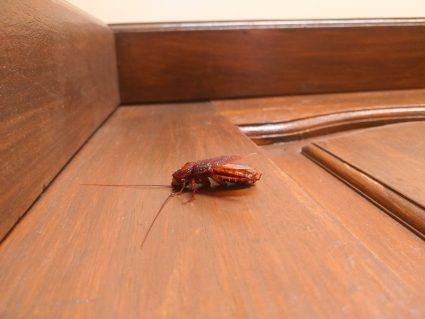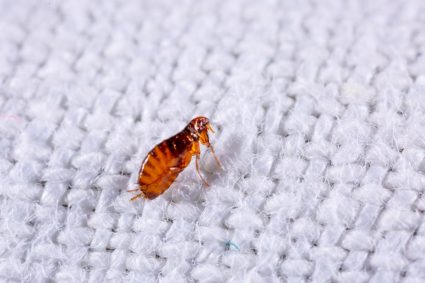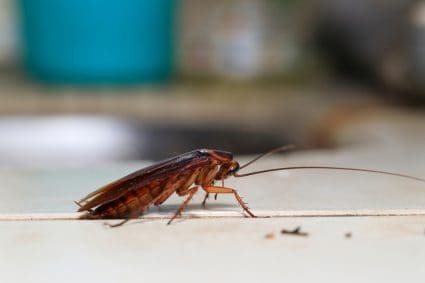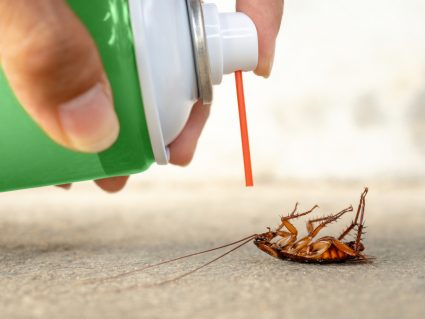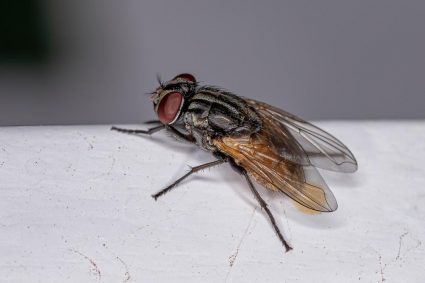
Fleas are a common nuisance for pet owners and households around the world. These tiny, jumping pests not only cause discomfort and potential health issues for pets and humans but also are notoriously hard to get rid of once they’ve infested a home. Many methods have been used to combat them, but one question remains: Does heat kill fleas?
Yes, heat does kill fleas. Adult fleas die at temperatures above 95°F (35°C), and flea larvae cannot survive temperatures over 103°F for more than an hour. However, flea eggs are more resilient with around 40% still hatching at 95°F. Applying heat through methods like washing and drying, steam cleaning, professional heat treatment, and using hot water can effectively kill fleas at all stages.
The Effect of Heat on Fleas
Heat does indeed kill fleas, including their eggs and larvae, when used correctly. Fleas are ectothermic creatures, reliant on the temperature of their environment to regulate their internal body temperature. Adult fleas die at temperatures above 95°F (35°C), while flea larvae cannot survive temperatures over 103°F for more than an hour. Flea eggs, however, are slightly more resilient, with around 40% hatching at 95°F.
Heat as a Flea Control Method
In the fight against fleas, heat can be a potent ally. By raising the temperature in the infested areas of your home, usually to around 95°F, you can effectively kill adult fleas, larvae, and eggs. This process, known as heat treatment, can take several hours or even a couple of days, depending on the severity of the infestation.
Heat treatment is considered more effective than chemical treatments because it penetrates even the most obscure places where fleas may hide, such as small cracks, behind curtains, and under furniture. However, it’s important to remember that heat treatment alone may not be enough to prevent future infestations. Regular cleaning, treating outdoor areas where fleas may breed, and maintaining flea control measures for pets are essential to keep your home flea-free.
Applying Heat to Kill Fleas
There are several ways to apply heat to kill fleas:
- Washing and Drying: Wash your clothes, pet bedding, and other washable items at the highest heat setting they can tolerate. The high temperature in the washing machine and dryer will help kill fleas and their eggs.
- Steam cleaning: Steam cleaning can kill fleas in carpets, furniture, and other hard-to-reach areas. The high temperature of the steam is lethal to fleas at all stages, from egg to adult.
- Professional heat treatment: Pest control services can use heat treatment to kill fleas in your home. This method involves heating the affected areas to around 50 degrees Celsius (122 degrees Fahrenheit) for a prolonged period of time, killing adult fleas, larvae, and eggs without the use of chemicals.
- Hot water: Fleas die when exposed to temperatures greater than 95°F (35°C). Washing flea-infested bedding and garments in hot water can help kill them.
Risks and Drawbacks of Using Heat
While heat can effectively kill fleas, there are potential risks and drawbacks. For instance, heat must be sustained at a high enough temperature for a specific amount of time. If the heat is not maintained properly, some fleas may survive and re-infest your home. Heat treatment may also cause damage to certain items, such as electronics or delicate fabrics, if not done carefully.
Comparing Heat to Other Flea Control Methods
Compared to chemical treatments, heat treatments are considered a safer and more environmentally friendly alternative. They are also effective against other pests, such as bed bugs. However, it is essential to use heat treatments properly to ensure their efficacy, especially on flea eggs.
In summary, heat can kill fleas, but the temperature must be high enough and maintained for a sufficient amount of time to ensure the complete eradication of the infestation.
Conclusion
In conclusion, heat can be an effective weapon against fleas, capable of killing these pests at all stages of their life cycle. However, using heat to kill fleas should be part of a comprehensive pest control strategy that includes regular cleaning, treating outdoor areas, and maintaining flea control measures for pets. If you’re dealing with a flea infestation, it’s recommended to hire pest control professionals who have the necessary equipment and expertise to effectively eliminate fleas from your home.
Frequently Asked Questions
How long does it take for heat to kill fleas?
The exact time varies depending on the temperature and the stage of the flea’s life cycle. Adult fleas and larvae can die within a few hours at temperatures above 95°F (35°C). However, flea eggs are more resilient and may require sustained heat for a longer period to ensure they don’t hatch.
Can I use a hairdryer to kill fleas on my pet?
While the heat from a hairdryer may potentially kill fleas, it’s not recommended as a primary method of flea control. The heat may not be high enough to effectively kill all the fleas, and the hot air could potentially harm your pet’s skin. It’s better to use a flea comb and appropriate flea treatment for pets.
Does heat treatment for fleas also kill other pests?
Yes, heat treatment can also be effective against other pests, such as bed bugs. However, the effectiveness may vary depending on the specific pest and the severity of the infestation.
Can I perform heat treatment myself at home?
While it is possible to increase your home’s temperature to kill fleas, it may be challenging to maintain the required heat level throughout your home for a sufficient length of time. Additionally, incorrect application of heat can lead to damage to your property or belongings. Therefore, it’s recommended to hire professionals for heat treatment.
Can heat treatment replace regular flea prevention methods for my pets?
No, heat treatment should not replace regular flea prevention and treatment for your pets. Regular flea treatments for pets are essential to prevent an infestation in the first place. Heat treatment is more appropriate for addressing an existing infestation in your home.


